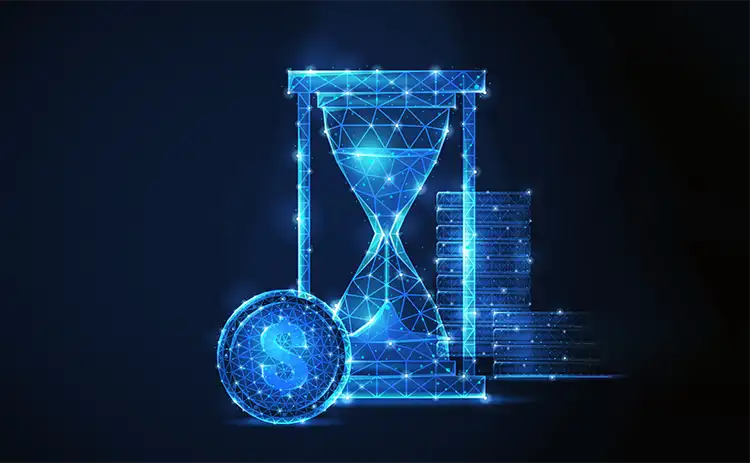
In the dynamic world of project management, staying ahead of the game is essential. That’s where AI and RPA come in, revolutionizing project forecasting and resource planning. Forget outdated spreadsheets and countless hours of manual data entry – with AI and RPA, you can supercharge your project management process and achieve greater efficiency and accuracy. So, let’s dive into the exciting world of AI and RPA in project forecasting and resource planning, and discover how these cutting-edge technologies can take your projects to the next level.
When it comes to project forecasting, accuracy is key. AI, or Artificial Intelligence, brings its powerful analytical capabilities to the table, enabling you to make data-driven predictions and anticipate potential roadblocks. By analyzing historical data, market trends, and various other factors, AI algorithms can provide invaluable insights into project timelines, resource allocation, and budget planning. With AI by your side, you can make informed decisions that minimize risks and maximize project success.
Now, let’s talk about RPA, or Robotic Process Automation. Imagine having a virtual assistant that can handle repetitive, mundane tasks with lightning speed and unwavering accuracy. That’s exactly what RPA brings to the table. From data entry and report generation to task scheduling and document management, RPA takes care of the nitty-gritty details, freeing up your time and energy for more strategic project planning. With RPA in your arsenal, you can streamline your workflows, eliminate human error, and unlock a whole new level of productivity.
In this article, we’ll explore the various applications of AI and RPA in project forecasting and resource planning, and delve into the benefits they bring to the table. So, buckle up and get ready to embark on an exciting journey into the future of project management. Together, we’ll uncover how AI and RPA can transform the way you plan, execute, and succeed in your projects. Let’s dive in!
AI and RPA (Robotic Process Automation) are revolutionizing project forecasting and resource planning. By leveraging artificial intelligence and automation, organizations can optimize their project management processes, leading to increased efficiency and accuracy. AI algorithms can analyze vast amounts of data and historical trends to predict project outcomes and resource needs. RPA technology can automate repetitive tasks, freeing up resources for more strategic activities. Together, AI and RPA empower project managers to make data-driven decisions and allocate resources effectively, resulting in successful project delivery.

AI and RPA in Project Forecasting and Resource Planning
Artificial Intelligence (AI) and Robotic Process Automation (RPA) have revolutionized various industries, and their impact on project forecasting and resource planning cannot be ignored. In this article, we will explore how AI and RPA are transforming these crucial aspects of project management, providing businesses with greater accuracy, efficiency, and insights.
The Role of AI in Project Forecasting and Resource Planning
AI has emerged as a game-changer in project forecasting and resource planning. By leveraging advanced algorithms and machine learning, AI can analyze vast amounts of data and make accurate predictions about project timelines, costs, and resource requirements.
AI-powered forecasting models can take into account historical data, current market conditions, and other relevant factors to generate reliable projections. This enables project managers to make informed decisions, allocate resources effectively, and mitigate potential risks. AI algorithms can also adapt and learn from real-time data, constantly improving their accuracy over time.
Moreover, AI can automate repetitive and time-consuming tasks involved in resource planning, such as scheduling, capacity management, and resource allocation. By automating these processes, AI frees up valuable time for project managers to focus on more strategic activities and decision-making.
Benefits of AI in Project Forecasting and Resource Planning
1. Enhanced Accuracy: AI algorithms can analyze vast amounts of data with precision, leading to more accurate project forecasts and resource plans.
2. Improved Efficiency: By automating manual tasks, AI reduces the time and effort required for project forecasting and resource planning.
3. Real-time Insights: AI can process real-time data to provide up-to-date information on project progress, resource utilization, and potential bottlenecks.
4. Risk Mitigation: AI-powered forecasting models can identify potential risks and suggest mitigation strategies, helping project managers proactively address challenges.
5. Cost Optimization: AI algorithms can optimize resource allocation, minimizing costs and maximizing productivity.
The Role of RPA in Project Forecasting and Resource Planning

RPA complements AI by automating repetitive and rule-based tasks involved in project forecasting and resource planning. It involves the use of software robots or “bots” to perform these tasks, mimicking human actions and interactions with various systems and applications.
RPA can streamline processes such as data entry, data extraction, and report generation, reducing manual errors and improving efficiency. It can also integrate with existing systems, enabling seamless data exchange and synchronization between different tools and platforms.
Benefits of RPA in Project Forecasting and Resource Planning
1. Increased Efficiency: RPA eliminates manual and mundane tasks, allowing project managers to focus on more strategic activities.
2. Error Reduction: By automating data entry and extraction, RPA minimizes the risk of human errors and ensures data accuracy.
3. Scalability: RPA can handle large volumes of data and repetitive tasks without compromising speed or quality.
4. Seamless Integration: RPA can integrate with existing systems and applications, enabling smooth data transfer and synchronization.
5. Cost Savings: By reducing the need for manual labor and improving efficiency, RPA helps businesses save costs in project forecasting and resource planning.
In conclusion, AI and RPA are transforming project forecasting and resource planning by enhancing accuracy, efficiency, and insights. Leveraging the power of advanced algorithms and automation, businesses can make more informed decisions, optimize resource allocation, and mitigate risks. By embracing AI and RPA, organizations can unlock new opportunities for growth and success in their project management endeavors.
Key Takeaways: AI and RPA in Project Forecasting and Resource Planning
- AI and RPA technologies can greatly enhance project forecasting and resource planning.
- Using AI algorithms, businesses can analyze historical data to predict project outcomes and resource requirements.
- RPA can automate repetitive tasks in project management, saving time and increasing efficiency.
- AI and RPA can help optimize resource allocation, ensuring the right people are assigned to the right tasks.
- Implementing AI and RPA in project forecasting and resource planning can lead to improved project success rates and cost savings.
Frequently Asked Questions
How can AI be used in project forecasting?
AI, or Artificial Intelligence, can greatly enhance project forecasting by analyzing large amounts of data and identifying patterns and trends. With AI algorithms, project managers can make more accurate predictions about project timelines, resource requirements, and potential risks. By leveraging historical data and real-time information, AI can provide valuable insights into project forecasting, helping teams make informed decisions and improve overall project performance.

Additionally, AI can automate repetitive tasks involved in project forecasting, such as data collection and analysis. This allows project managers to focus on more strategic activities and save time and effort. By harnessing the power of AI, organizations can optimize their project forecasting processes and achieve better project outcomes.
What is the role of RPA in resource planning?
RPA, or Robotic Process Automation, plays a crucial role in resource planning by automating manual and repetitive tasks involved in the process. RPA software robots can gather data from various sources, such as HR systems and project management tools, and perform calculations to determine resource availability and allocation. This not only saves time but also reduces the risk of errors commonly associated with manual data entry.
RPA can also help optimize resource utilization by continuously monitoring resource allocation and availability. It can automatically identify any discrepancies or bottlenecks and suggest adjustments to ensure efficient resource planning. By streamlining resource planning processes with RPA, organizations can improve resource utilization, minimize costs, and enhance overall project performance.
Can AI and RPA work together in project forecasting and resource planning?
Absolutely! AI and RPA can work together synergistically to enhance project forecasting and resource planning. AI algorithms can analyze vast amounts of data, identify patterns, and make accurate predictions, while RPA can automate the execution of these predictions and recommendations.
For example, AI can analyze historical project data and provide insights on resource requirements for future projects. RPA can then automate the process of allocating resources based on these insights, ensuring optimal resource utilization. The combination of AI and RPA enables organizations to streamline project forecasting and resource planning processes, saving time, improving accuracy, and driving better project outcomes.
What are the benefits of using AI and RPA in project forecasting and resource planning?
There are several benefits of using AI and RPA in project forecasting and resource planning. Firstly, AI can provide more accurate predictions by analyzing large amounts of data and identifying patterns that humans may overlook. This leads to better project timelines and resource allocation decisions.
Secondly, RPA automates repetitive tasks involved in project forecasting and resource planning, saving time and reducing the risk of errors. This allows project managers to focus on more strategic activities and make better use of their expertise.
Lastly, the combination of AI and RPA can optimize resource utilization by continuously monitoring and adjusting resource allocation based on real-time data. This ensures that resources are allocated efficiently and helps organizations achieve better project outcomes.
Are there any challenges or considerations when implementing AI and RPA in project forecasting and resource planning?
Implementing AI and RPA in project forecasting and resource planning may come with some challenges and considerations. Firstly, organizations need to ensure they have access to quality and reliable data for AI algorithms to provide accurate predictions. Data cleansing and integration may be necessary to achieve this.
Secondly, there may be concerns related to change management and employee acceptance when introducing AI and RPA into existing processes. Proper training and communication are essential to address any resistance and ensure smooth adoption.
Lastly, organizations should also consider the ethical implications of using AI and RPA, such as data privacy and security. Implementing strong governance and compliance measures is crucial to mitigate any risks associated with these technologies.

Final Summary: Harnessing the Power of AI and RPA in Project Forecasting and Resource Planning
In this era of technological advancements, it’s crucial for businesses to stay ahead of the curve. When it comes to project forecasting and resource planning, the integration of Artificial Intelligence (AI) and Robotic Process Automation (RPA) has proven to be a game-changer. By leveraging the power of AI and RPA, organizations can streamline their operations, improve accuracy, and make better-informed decisions.
Through AI, businesses can analyze vast amounts of data, identify patterns, and generate accurate forecasts. This enables project managers to anticipate potential risks, allocate resources effectively, and optimize project timelines. The predictive capabilities of AI provide invaluable insights that allow businesses to make proactive adjustments, ultimately leading to increased efficiency and profitability.
Furthermore, RPA automates repetitive and time-consuming tasks, freeing up valuable human resources to focus on more strategic activities. By automating resource planning processes, businesses can reduce errors, minimize manual effort, and ensure optimal resource utilization. RPA also enables real-time data synchronization, fostering seamless collaboration among project teams and stakeholders.
By harnessing the combined power of AI and RPA, businesses can revolutionize their project forecasting and resource planning processes. The benefits are manifold, from improved accuracy and efficiency to enhanced decision-making and resource optimization. Embracing these technologies is not just a trend; it’s a necessity for organizations aiming to thrive in the future. So, gear up, embrace the potential of AI and RPA, and propel your project management practices to new heights. The future is here, and it’s time to seize it.